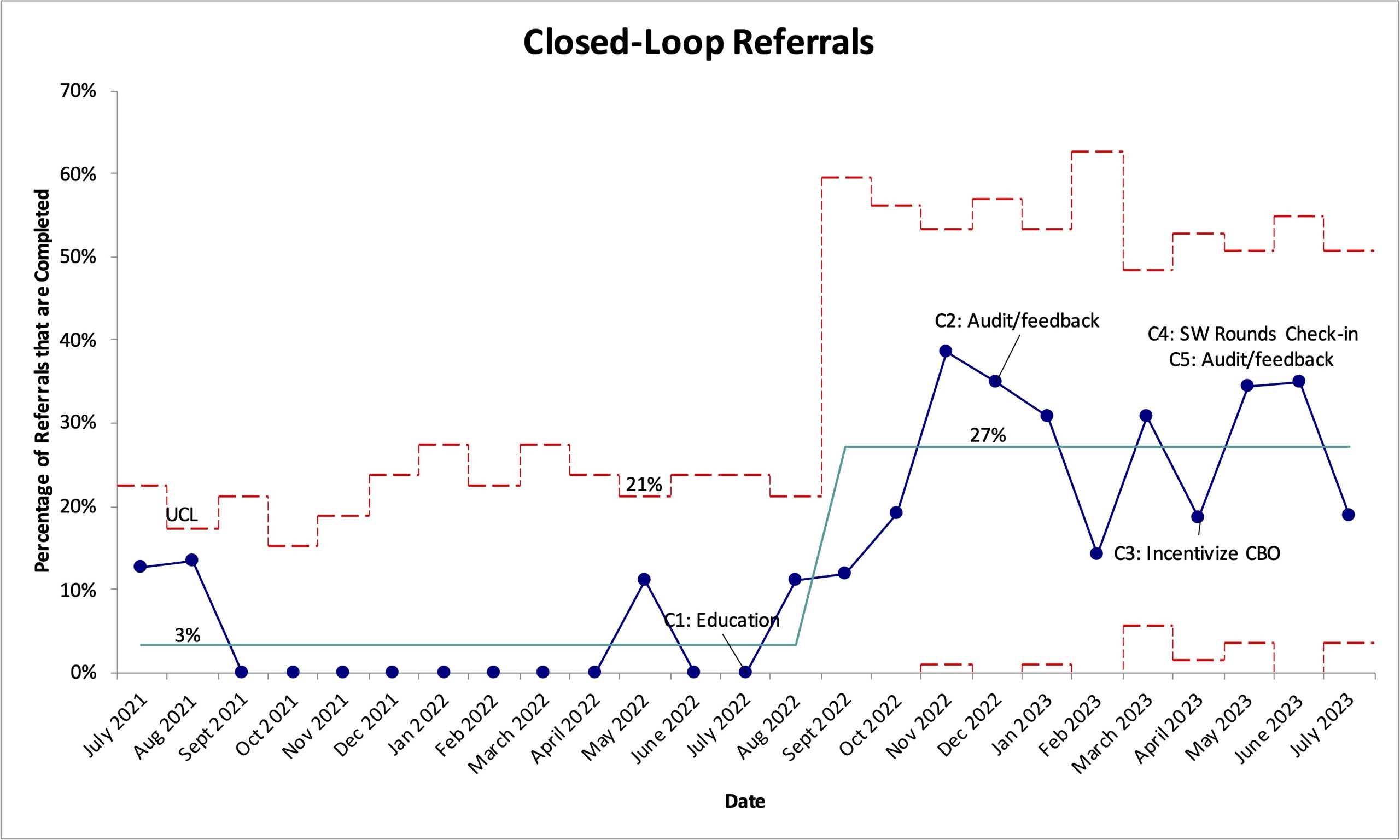Background: Efforts have been made to increase social determinants of health (SDoH) screening to connect patients and families to community-based organizations (CBOs) and other resources. Tracking closed loop referrals is one potential measure to assist in assessing whether the resulting referrals and interventions have affected the child’s SDoH or improved the family’s well-being. Our team aimed to increase closed- loop referrals for positive screenings of SDoH on the inpatient pediatric hospital medicine (PHM) service from a baseline of 3% to 70% within one year.
Methods: A multidisciplinary team was established at our tertiary children’s hospital and completed tools including Ishikawa and process map. Currently, patients are screened for SDoH using the Protocol for Responding to and Assessing Patients’ Assets, Risks, and Experiences (PRAPARE) screening tool available in our electronic medical record (EMR). Social Workers (SW) then utilize an EMR- embedded tool (FindHelp) to seek CBO resources for families who screen positive. Measures to follow the team’s progress included percentages of: closed loop referrals (outcome); screenings and assessments completed (process); length of stay (balancing); and acceptability of the process to patients/families, social workers, nursing, and providers (balancing). PDSA cycles included: social worker awareness and education regarding importance of closed loop referrals (C1), social worker feedback on personal metrics for closed loop referrals (C2 and C5), incentivization of outside agencies to respond to referrals (C3), and resident team check-ins during rounds with assigned SW (C4).
Results: During the study, 6582 SW assessments were completed, and 2276 PRAPARE screenings were administered. Screenings completed increased from 28% to 41%, and positive screenings increased from 48% to 55%. 406 families were provided with resource referrals. Special cause variation was achieved and sustained after C1 with the percentage of closed loop referrals increasing from 3% to 27% (Fig. 1).
Conclusions: The implementation of an organized approach to promoting and tracking closed loop referrals led to successfully increasing the number of closed loop referrals, though further interventions are needed to reach the goal of 70%. Additional PDSA cycles are ongoing including adding referral information to patient discharge summaries. Next steps include implementing enterprise-wide universal screening for SDoH. Future projects to further assess if referrals and interventions affect patients’ or families’ SDoH or overall health outcomes are needed.

